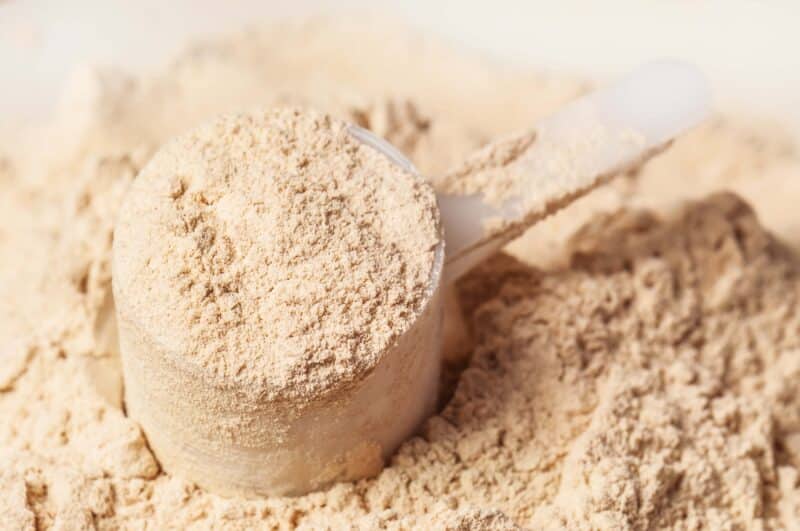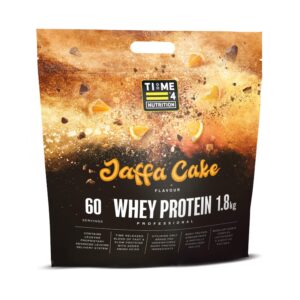SKIMMING ON QUALITY – WHY WE DON’T USE SKIMMED MILK POWDER IN TIME 4 WHEY PROTEIN PROFESSIONAL
Skimming On Quality – Why We Don’t Use Skimmed Milk Powder In Time 4 Whey Protein Professional
Skimmed Milk Powder
During the pandemic, demand for dairy ingredients regularly appeared to outstrip supply, even with highly inflated prices that saw the cost of whey isolate triple in some cases. The dairy industry itself should take responsibility for much of the damage incurred by the sports nutrition industry, -every year there’s always some drama unfold that leads to manipulation of prices over supposed “shortages”, leaving many companies feeling dissatisfied and played by the large dairy corporations that own/prioritize most of the big PLC’s brands that they’re up against.
In fact, for a while it was looking like many companies may not even be able to obtain sufficient supply at any price. This of course was mirrored by what we were seeing with commodities like creatine monohydrate, with one major company notoriously paying nearly 1000% more for a full container (10 tons plus) than they were paying a year before the pandemic touched down just to meet existing demand.
So how have most companies adapted to the soaring material and manufacturing costs (energy price hikes) and labour shortages? The impact was devastating for most, with new product launches being delayed or cancelled, product ranges being reduced, and innovation scaled back dramatically. Even with these adjustments, shortages were commonplace and lead times increased substantially. However, price increases and decreased unit sizes were not the only adaptations we were seeing, formula adjustments were also taking place, with varying degrees of openness about the practice to be found. Many companies would have you believe that this response is not really that big a deal and that there’s no point confusing you over the issue; strangely enough, they’ve sworn their life away about their integrity, the quality of their ingredients and the innovation behind their formulas prior to this point!

The addition that I have perhaps the biggest issue with currently is skimmed milk, I’ve seen it increasingly popping up in protein formulas, although this use has predated the pandemic for some companies. Let me tell you exactly how I see this. Imagine for a moment that you’re at the gym and you’ve just ordered one of those pre-prepared high protein meals that many offer these days, and whilst someone is zapping it in the microwave, you ask to look at the packaging. You’re now sat at a table intently scrutinizing the ingredients of your favourite Asian option, -“mmm, -cooked rice, cooked chicken, carrots, edamame beans, red quinoa, onions, coconut milk, cat food, spring onions, ginger puree, -hang on, -bloody CAT FOOD!!!?” Okay, -I get that some may see this view to be extreme, but I don’t personally. Not that this would be acceptable anyway, but it is not just turning up in weight gainers and meal replacements, it’s going into (supposedly) cornerstone protein products primarily, -the shop window item for the company. Like the example above, this inclusion is there to be seen amongst the assumed high-quality ingredients, like “undenatured” whey proteins, milk protein concentrate (MPC) and micellar casein. Why would you put this in there? Like MPC, skimmed milk is 80% casein and 20% whey, at a quarter the cost of MPC, you can only assume that it’s in there to “muddy the waters” about exactly how the production cost is reduced. HPLC testing methodology can identify casein, but it depends on the extent you’re prepared to go to. More basic testing could determine nitrogen content (an indicator of protein), -that won’t tell us where it came from, -e.g., spiking with amino acids, or crappy wheat protein from peptide-bonded glutamine. It’s simply saying, “I’ve already told you that I’m in here just in case you actually find me!” True, but we’re also supposed to believe that MPC is in there when we know that skimmed milk powder serves no purpose! So how crap is skimmed milk powder compared to the other ingredients? Milk Protein Concentrate is normally around 80% protein, the material we’ve used in Time 4 Whey reformulation stands at 85% and around 5% lactose. Skimmed milk is 33% protein and over 50% lactose! Thus, you then need to question the macros on the label, and if they were correct when it comes to sugar, the next question would be “then what was skimmed milk meant to distract us from, -where the protein is coming from?”
After all the time I’ve put in writing about the recognition of protein quality, the concept of dietary fast and slow proteins and the acceptance of bioactivity and denaturation in milk proteins, I thought it wise to include the opinions of others who have had a major impact on the supplement industry since the boom days of the early nineties.

David Jenkins was the founder/CEO of Nutrition, the company behind Designer Whey, popularized through the pages of Muscle Media 2000, it was probably the most successful whey protein brand in history. A former World ranked no.1 400 metre runner, David is one of the most knowledgeable people I have met in this industry, holding multiple international patents. This is a brief excerpt from the fascinating discussion I had with him:
I became fascinated by whey protein back in the early 1980s. Reading the Financial Times one day in London, I came across an article about whey protein isolate being produced in South Wales, by a company called Le Sueur Isolates, they were working with Mitsubishi on ion-exchange whey protein production technology at the time, -such was Mark Davis’s amazing foresight into this whole new world! (Hence, one of the Davis family’s businesses today is called Cambria, Welsh for Wales!! Some years later, I met Mark and his sons for lunch in La Sueur… delightful bygone days.)
My father, then a director of BP / British Petroleum shared with me the progress BP was making in ion-exchange processing of oil-based algae to create an animal protein. This was being conducted, surprise, surprise — in South Wales. In England there’s the expression – “Where there’s muck there’s money!”
One thing I learned in my Chemical Engineering classes in the early ’70s, was that effluent sources could be a gold mine if prepared, engineered and modified accordingly. In late ’80s I moved to San Diego County with easy access to UCSD Library in La Jolla, CA. I became a zealot, devouring all the textbooks I could find on whey protein and all the various possible health and nutritional benefits of this superb protein source and its various sub-fractions and amino acid content / profiles, etc. Back then, Golden Cheese, in Corona, California was making WPC. Lactose content, of course, was a big problem. By some good fortune, I was introduced to, the late Bernie Horton, who chaired the first International Whey Protein Conference in Chicago and the late Dr Gene Sander, of University of Minnesota, Professor of Food Science. If my memory serves me, Gene and I hit it off and so it began…Designer Whey and all that followed, now long sold off.
Brian – the wicked webs they weave! In my opinion, Skimmed Milk Powder added to a whey-based (WPC or WPI) product is consumer fraud, especially if it is not clearly included on the packaging / container label and FDA required ingredient statement. Not much different to the duplicitous / illegal protein spiking of whey protein with free form amino acids. Unfortunately, it will require an HPLC analysis to flush out the skimmed milk levels that have been added into the whey protein, whether isolate or not.
HPLC will be pricey at Eurofins. University of Wisconsin will likely have HPLC access if there is good contact there. I have none.
Considering his history, I think David’s view on the subject is pretty clear. We went on to discuss various other industry-related issues and projects, it was a very insightful conversation, and I will return to some of the other subjects covered in the near future.

John Morin is the former CEO /Founder of Prolab Nutrition and currently owns Inner Armour Sports Nutrition. At one time, Prolab were the single largest importers/distributors of creatine in the US, and easily contended as one of the largest international retailers of whey protein. John had the following brief statement to make on the subject:
Considering what happened during the pandemic, I feel sorry for some of these companies, -there was little material available for quite a while, certainly not at sensible money, -what are you gonna do? You’re going to let people down one way or another. I think you’ve got to show transparency though, -I mean in every aspect. If you’re adding it, tell them why, -exactly why, -leave the decision to them. There’s always going to be budget brands, right? If that’s what your customer’s looking for, -transparency. We could never include that kind of stuff, we’re too high profile, we don’t need to, -if we can’t get it, -who can? When the dairy companies started increasing supply, we were always going to be close to the front. But I sympathise with the smaller companies, they were in a totally unique situation. Let’s face it, -the dairy companies were looking after their own brands and they knew where the skimmed milk powder was going, -they weren’t refusing to sell it, right? I’m pretty sure you’re not going to get them bad mouth the practice, they’ll just say they know nothing about it.
I think John gave a pretty blunt appraisal, he didn’t pull any punches and I wasn’t able to use everything he told me about, but let’s just say that there’s more to follow, -I’ve just got to think how to educate rather than implicate!

My next interview on this subject came from industry entrepreneur Jack Owoc, former CEO/Founder of VPX Sports, Redline and Bang Energy. I gave an interview on Jack for Bloomberg a few months ago, he’d just made it onto the Forbes List, -a pretty good yardstick for a successful formula if you’ve done it selling supplements. I have worked with VPX several times over the years, starting back in the mid-nineties, I can certainly confirm that I don’t know many companies who have moved as much protein as these guys. I have also approached them on behalf of some of the largest supplement companies out there about having VPX contract manufacture for them, this surely gives an idea of their production capacity and knowledge base. Jack had the following to add:
Thanks for reaching out Brian. Here are just some thoughts off the top of my head initially before I expand further.
Why would you include ingredients that have been produced utilizing the super expensive processes needed to obtain a whey isolate or concentrate only to add the same exact ingredients i.e., skimmed milk powder back into the formula that you paid handsomely to have filtered out?
The non-concentrated and isolated whey protein ingredients in skimmed milk powder are purposely filtered out of a high-grade protein product because they are unwanted ingredients that cause unwanted side effects and deliver none of the superior and desirable effects of high-grade whey protein.
Therefore, it’s my view that adding skimmed milk powder to a high-grade whey protein concentrate or isolate is just another example of the chicanery and tomfoolery that outliers in the supplement industry engage in to deceive, defraud and confuse consumers.
It’s a never-ending game of Whac-a-Mole that must be exposed and extinguished.
I think Jack more than effectively explains away any legitimate or sensible reason to include skimmed milk powder in a protein formula other than cost/quality cutting or deception.
My final interview is with Paul Smith who is MD of Time 4 Nutrition, a popular and innovative brand that has been making waves in the UK sports nutrition market for the last eight years. With a business model that has kept gym support and distribution central to its core values, this loyalty posed particular challenges during a pandemic response of imposed gym closures, cessation of manufacturing and resultant public hardship. The bold response has been to raise the bar and release a new “Professional Line” of protein supplements and update existing formulas for a more committed and discerning customer base. During a recent break from pre-launch preparations, I asked for his input on the growing practice of cutting corners with cheap ingredients like skimmed milk, this was his response:
Given the rapid ground we made in the domestic marketplace pre-covid and tough challenges we’ve faced “sticking to the plan” in more recent times, I feel that Time 4 Nutrition has been on the frontline when it comes to competing in an honest manner. We’ve made good use of this time trying to continue the trajectory, not simply to bounce back, but do what we’ve always done, -respond to the research, innovate and adapt. Sure, I still hear it from some corners, – “all that matters is that it tastes good and it’s the right price.” But we’re not a white label brand like many of those we’re up against, -I didn’t get involved to sell something that I don’t believe in or wouldn’t personally use myself, -that’s the difference that our loyal customers have grown (literally) to know. They also know that we were never happy with tasting just “good”, -wait till they taste the new flavours! In a cost-of-living crisis, I don’t feel that the most economic way I can reward that loyalty is to start replacing ground-breaking formulas with cheap ingredients like skimmed milk powder. I think it goes without question that we’ll always strive to deliver on our promise of commitment to quality and results at the best price permissible for our continued advancement, – and they’re really going to see that as we start to pull away and look at the last couple of years in the rear-view mirror!
This concludes the first batch of interviews I gave on this subject, but I’ll be glad to update you soon on recent news of some more positive trends about to commence within our industry. Stay tuned!

